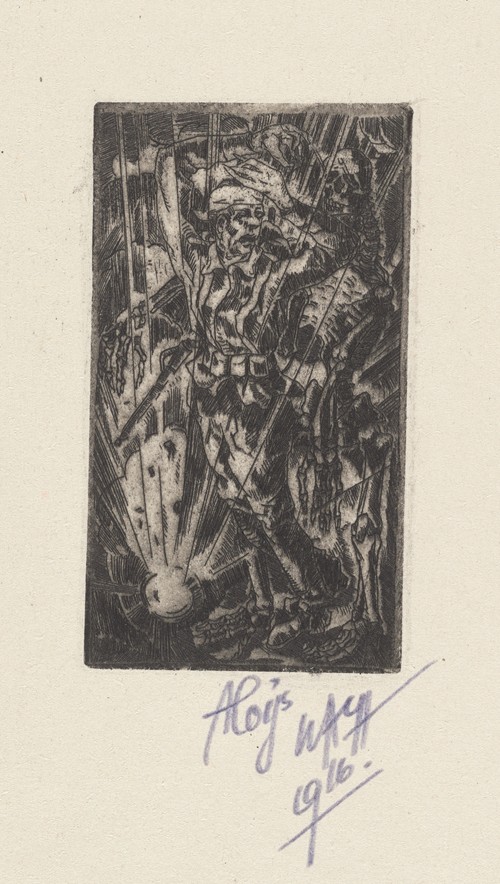
Incorporate what you have learned about the process and components of art appreciation. Explain why you were attracted to this work, and discuss at least two characteristics of this art work that you found interesting or noteworthy. Identify the title, artist, movement (date if known), and region (place if known) of your work. Your work of art should be one that you have not already examined elsewhere in this class.

You may select a work from the textbook, resources, videos, or museum links. Prior to beginning work, read and review the following resources: Expressionism: ∾xpressionism in Art Identifying Movements (Links to an external site.) (Links to an external site.) The Origins of Expressionism, an Evocative Movement Inspired by Emotional Experience (Links to an external site.) Cubism: ∼ubism in Art Identifying Movements (Links to an external site.) Cubism (Links to an external site.) Modernism, Formalism, and Politics: The ∼ubism and Abstract Art Exhibition of 1936 at the Museum of Modern Art Picasso, Still Life With Chair Caning (Links to an external site.) Constructivism: ∼onstructivism in Art Identifying Movements (Links to an external site.) Constructivism (Links to an external site.) Surrealism: Surrealism in Art Identifying Movements (Links to an external site.) Surrealism (Links to an external site.) Dreams of Dalí: 360º Video (Links to an external site.) Salvador Dali: Modernisms Counter-Muse For your initial post, you should Choose a work of art from one of these movements. Braque’s work after WWI contained elements of Cubism.In this discussion forum, you will learn about the history of art by exploring the Expressionism, Cubism, Constructivism and Surrealism eras in chronological order and selecting a work of art from one of those movements to discuss. After 1917, Picasso returned to a more Realism-inspired style of painting however, The Three Musicians and The Weeping Woman contain many Cubist influences. World War I effectively halted Cubism as a movement as many of the seminal artists of the time were called up. Some made use of real-world items – such as collaged newspapers or card from the great games you’ll love to this day – in their artworks. Artists from this period used simpler shapes and brighter colours. While Analytical Cubism lasted five years, Synthetic Cubism lasted two years – from 1912 to 1914. This is the most severe form of Cubism and the artists interwove planes and lines in muted black and grey tones.

Picasso’s work – Les Demoiselles d’Avignon – is widely acclaimed to be the first work in the Cubist Movement.Īnalytical Cubism straddled the latter portion of the first decade of the 20 th century and the first couple of years of the second decade. It is said that Cubism developed in two distinct phases: Analytical Cubism and Synthetic Cubism. Regarding his take on painting, he famously listed the features of a person’s face but said that the artist is able to depict them in any order he or she sees fit – not necessarily as they appear on the human face. Picasso took most of his inspiration from African masks and was a regular fixture at the Quai Branly Museum in Paris. The beginnings of Cubism can be seen in the work of Paul Cézanne, who painted his subjects from slightly different points of view as had been previously the norm. Picasso used the geometry of the faceted paintings of Braque to create a style which was abstract in essence.

By using these geometrical images, the artist is able to depict all of the angles of the subject in one painting.īoth fathers of Cubism used only enough aspects of the real world, in their works, in order to create a tension between the real world and what was depicted in the painting.īraque used the technique of faceting, which he developed in order to depict real-world objects. This is because everything in our world takes on a different view based on the angle that you view it from.Ĭubism takes a three-dimensional object, deconstructs it and reinterprets it according to geometric images.

Picasso and Braque say that the centuries of realist paintings – such as the Impressionists – which had come before them were inadequate at truly representing the 3D world. What we mean by this is that instead of depicting a subject as it appears in ‘real-life’, an artist following the Cubist movement would depict that same object in a fragmented way. It was formed around the beginning of the 20 th century and, as art historians term it, Cubism was a revolutionary way of depicting reality. The art movement, which became known as Cubism, was invented by Pablo Picasso and Georges Braque.


 0 kommentar(er)
0 kommentar(er)
